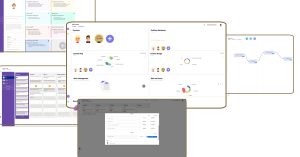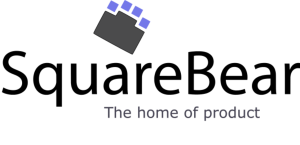A SquareBear insight
Fostering collaboration and trust
Effective collaboration and trust are essential elements regardless of the composition of the project team, whether it involves internal staff, stakeholders, various departments, or external consultants. Without these foundational principles, misalignment can easily arise, leading to inefficiencies and ultimately hindering project success[1].
Projects seldom follow a linear path from start to finish; instead, they often encounter twists, turns, and unexpected challenges along the way. During these course correction moments, it becomes paramount for all team members to share a common understanding of the project’s overarching vision, akin to following a guiding “north star.”[2],[3]
This shared vision serves as a compass, guiding the team through uncertainties and facilitating decision-making processes. It ensures that every individual involved in the project remains focused on the goal, despite any deviations or adjustments required throughout the project lifecycle. Furthermore, alignment of goals among team members fosters a cohesive environment where collaboration flourishes, enabling effective communication, knowledge sharing, and problem-solving[4].
By nurturing collaboration and trust while ensuring alignment of goals, teams can adeptly navigate the intricacies of project execution. This not only boosts productivity and efficiency but also fosters innovation and adaptability, culminating in the successful attainment of the project’s objectives. Research indicates that this creates a “virtuous circle”: Trust enhances collaboration (by 80% compared to the baseline), and collaboration, in turn, bolsters trust by 84% compared to the baseline. As previously discussed, both trust and collaboration significantly enhance the overall likelihood of project success. [5].
Collaborative environments foster increased trust within the product team by delivering transparancy and facilitation of knowledge sharing. The industry has benefited from the tools like Miro, for designers; Trello, Jira and Confluence for project managers.
SquareBear represents the next generation – Where information is not only shared, but is integrated across key product domain areas to amplify and generate value.
SquareBear is for the whole product team. Its generative AI and algorithms makes true cross-functionality possible.
Value generated in one domain of product design, development and/or delivery is intelligently and algorithmically translated to deliver meaningful value into other product domains. This fosters collaboration and trust.
When you use SquareBear, you are using an intelligent, integrated, and dynamically linked digital environment that has been specifically built by product specialists to support product teams.
SquareBear’s generative AI and algorithms seamlessly translate information into formats preferred by each product team specialisation, thereby further bolstering collaboration and trust
Dedicated spaces , or ‘Squares’, allow for full value generation by your specialists in key product domains. Dynamically content is generated and translated by SquareBear’s intelligent systems to deliver value from this work into the ‘Squares’ belonging to other specialties of the product team automatically.
This transparency, relatability and currency of information helps build team trust and collaboration

By nurturing collaboration and trust while ensuring alignment of goals, teams can adeptly navigate the intricacies of project execution. This not only boosts productivity and efficiency but also fosters innovation and adaptability, culminating in the successful attainment of the project’s objectives. Research indicates that this creates a “virtuous circle”: Trust enhances collaboration (by 80% compared to the baseline), and collaboration, in turn, bolsters trust by 84% compared to the baseline. As previously discussed, both trust and collaboration significantly enhance the overall likelihood of project success. [5].
References
[1] ‘Communication and trust are key: Unlocking the relationship between leadership and team performance and creativity – ScienceDirect’. Accessed: Apr. 04, 2024. [Online]. Available: https://www.sciencedirect.com/science/article/abs/pii/S1048984315000934
[2] A. S. Silveira, ‘Seeking the North Star’, in Building and Managing High-Performance Distributed Teams, Berkeley, CA: Apress, 2021, pp. 35–47. doi: 10.1007/978-1-4842-7055-4_4.
[3] A. C. Chen and X. Fu, ‘Data + Intuition: A Hybrid Approach to Developing Product North Star Metrics’, in Proceedings of the 26th International Conference on World Wide Web Companion – WWW ’17 Companion, Perth, Australia: ACM Press, 2017, pp. 617–625. doi: 10.1145/3041021.3054199.
[4] L. Fish and S. Kiekbusch, The Designer’s Guide to Product Vision: Learn to build your strategic influence to shape the future. New Riders, 2020. Accessed: Apr. 04, 2024. [Online]. Available: https://books.google.com.au/books?hl=en&lr=&id=BtnPEAAAQBAJ&oi=fnd&pg=PT19&dq=shared+product+vision+serves+as+a+compass,+guiding+the+team+&ots=RFjgZA99ZW&sig=qXo10wkmOrqk_uiy3yCWeqXjbLk
[5] M. Westerlund and R. Rajala, ‘Learning and innovation in inter-organizational network collaboration’, J. Bus. Ind. Mark., vol. 25, no. 6, pp. 435–442, 2010.

